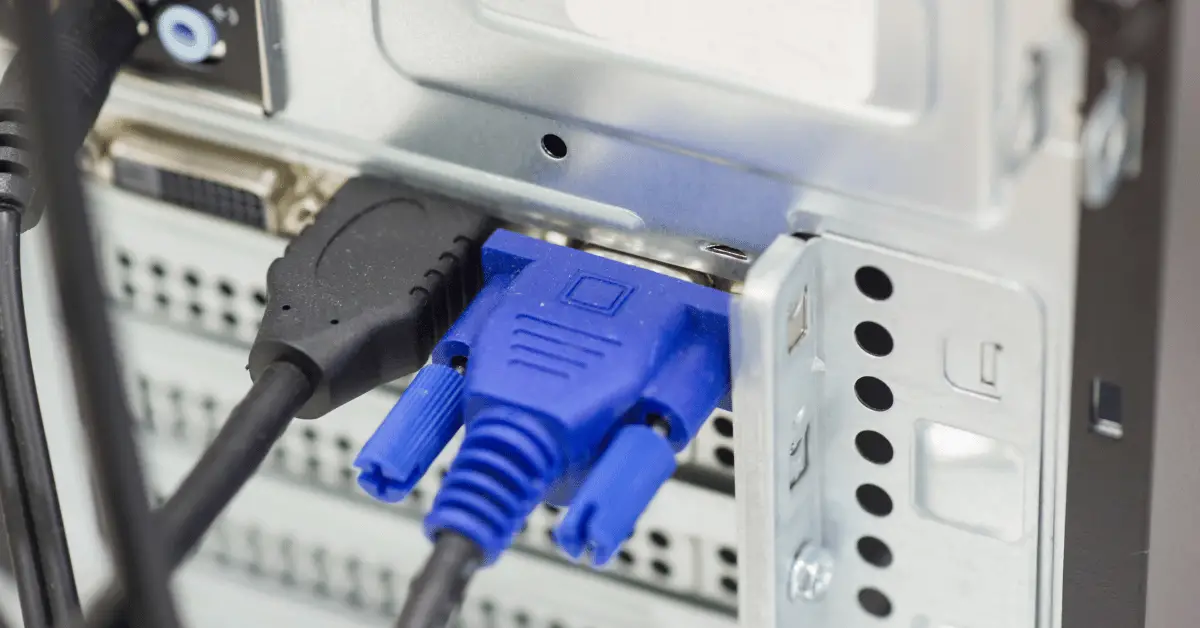Choosing the right display technology is essential to ensure high-quality visuals and smooth operation. Two of the most common display technologies are VGA and SVGA. VGA stands for Video Graphics Array, while SVGA stands for Super Video Graphics Array. Both of these technologies are used to connect displays to computers, projectors, and other devices. However, they differ in terms of their features, resolution, and capabilities. In this article, we’ll compare SVGA vs. VGA and discuss their features, advantages, and limitations to help you determine which technology is better suited for your display needs.
Table of Contents
SVGA vs VGA: Which One is Better?
When it comes to display technologies, two of the most commonly used options are VGA (Video Graphics Array) and SVGA (Super Video Graphics Array). While these two technologies share a lot of similarities, there are also some differences between them. In this article, we’ll compare SVGA vs. VGA and discuss their features, advantages, and limitations to help you determine which technology is better suited for your display needs.
Resolution:
One of the primary differences between VGA and SVGA is their resolution. VGA has a resolution of 640 x 480 pixels, while SVGA has a resolution of 800 x 600 pixels. This difference in resolution means that SVGA can display more detailed and higher-quality images than VGA.
Color Depth:
Another difference between VGA and SVGA is their color depth. VGA has a color depth of 8-bits, which means it can display up to 256 colors. In contrast, SVGA has a color depth of 16-bits, which means it can display up to 65,536 colors. This difference in color depth makes SVGA a better option for displaying images that require more vibrant and accurate colors.
Refresh Rate:
The refresh rate is another important factor to consider when comparing VGA and SVGA. VGA has a maximum refresh rate of 70 Hz, while SVGA has a maximum refresh rate of 85 Hz. A higher refresh rate means that the display can update images more frequently, resulting in smoother and more seamless visuals.
Compatibility:
When it comes to compatibility, VGA is a more widely accepted and compatible standard than SVGA. VGA has been around since the early days of computing and is still used in many devices today. SVGA, on the other hand, is a newer technology and may not be as widely supported by older devices.
Cost:
When it comes to cost, VGA is typically cheaper than SVGA. Since VGA is an older and more widely accepted technology, it’s more readily available and is often less expensive than SVGA.
Will SVGA work with VGA?
Yes, SVGA (Super Video Graphics Array) is compatible with VGA (Video Graphics Array) displays. This is because VGA is the predecessor of SVGA and is considered the baseline for most computer displays. SVGA is an extension of the VGA standard and is designed to provide higher resolution and color depth.
Most modern computers and display devices support both VGA and SVGA standards. If you have an SVGA graphics card and need to connect it to a VGA display device, you can do so using a VGA cable. The VGA cable will work with the SVGA graphics card and display the image on the VGA display device.
However, it’s essential to note that when you connect an SVGA graphics card to a VGA display device, the resolution and color depth may be limited to VGA standards. This is because VGA displays have a lower resolution and color depth than SVGA displays. As a result, some of the advanced features of the SVGA standard may not be available when using a VGA display device.
In summary, SVGA is compatible with VGA displays, and you can connect an SVGA graphics card to a VGA display device using a VGA cable. However, the resolution and color depth may be limited to VGA standards when using a VGA display device.
Conclusion
In conclusion, both VGA and SVGA have their advantages and limitations. If you’re looking for a display technology that offers high resolution and color depth, SVGA may be the better option. However, if compatibility and cost are your primary concerns, VGA may be the better choice. Ultimately, the decision between SVGA vs. VGA will depend on your specific needs and budget.

